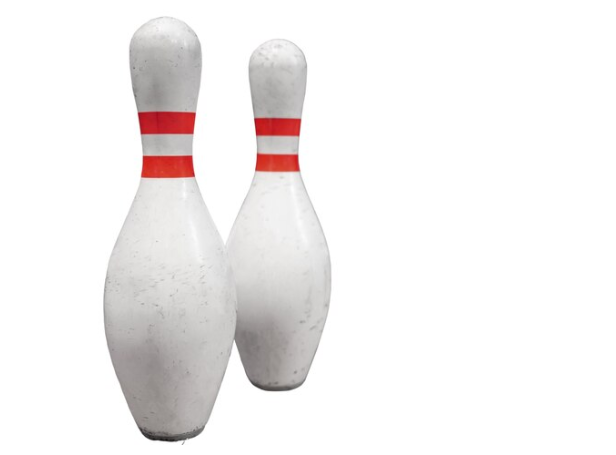Bowling is more than knocking down pins, it’s about control, power, and repeatable accuracy. One style that has transformed how many approach the lanes is the 2 handed bowling technique. This style creates higher spin, more speed, and stronger impact, all while reducing pressure on the wrist. Learning it properly means breaking it down step by step with attention to detail.
Step 1: Starting with a Balanced Hold
The first move in this style is how you hold the ball. Place your fingers into the holes with your dominant hand, then use the opposite hand to support the ball from the side. Keeping the ball close to the chest adds balance and prevents early strain. Many bowlers rush this step, but a steady hold makes every stage smoother. Think of it as building a solid base before any movement begins.
Pro Tip: Practice holding the ball for a few seconds before stepping forward. It conditions your muscles to feel comfortable in this position.
Step 2: Setting the Foundation in Stance
Your stance sets the rhythm for the throw. Stand with knees slightly bent, shoulders aligned, and feet about shoulder-width apart. Keep the ball centered at chest level, not too high or too low. Unlike single-handed styles, the stance here distributes weight across both arms evenly. This makes it easier to keep balance as the ball transitions into motion.
Pro Tip: Keep your eyes focused on your target down the lane even before moving. Training your eyes to stay locked builds accuracy from the start.
Step 3: Walking into Rhythm
The approach decides the tempo of your release. Take controlled, small steps toward the foul line, letting the ball move naturally with your body. If your feet are too quick, the ball will lag behind, which breaks rhythm. If your steps are too slow, the ball may pull ahead and cause mistimed releases. Rhythm matters more than speed here, as it lays the groundwork for a smooth launch.
Pro Tip: Record your steps and count them aloud during practice. Most bowlers benefit from a four- or five-step approach that stays identical every time.
Step 4: Controlling the Downswing
As the ball lowers into the swing, let both hands guide it down steadily. The non-dominant hand should act as a stabilizer, not the driver. By the time the ball reaches the lowest point of the swing, your arms should feel loose, not stiff. This relaxed downswing prevents jerks that can throw off timing and helps create room for stronger revolutions later.
Pro Tip: Think of the downswing as “gravity-assisted.”
Step 5: Releasing with Power and Accuracy
Release is the highlight of the two-handed method. As you near the foul line, your non-dominant hand pulls away while your dominant hand sends the ball forward. This separation creates leverage, helping the ball spin with more revs while staying true to your target. Avoid snapping the wrist too hard, as that can lead to inconsistent throws. A clean, smooth motion always beats forced power.
Pro Tip: Keep your palm under the ball a little longer before release. This adds more spin without added strain.
Step 6: Extending the Follow-Through
After the ball leaves your hand, extend your dominant arm forward and upward in a single motion. A complete follow-through directs energy straight into the ball and ensures accuracy. Stopping short often causes misdirected throws or a loss of speed. Think of the follow-through as finishing the motion you already started, not as a separate move.
Pro Tip: Hold your finishing position until the ball hits the pins. This helps reinforce proper body alignment.
Why Bowlers Turn to This Style
The two-handed release has gained attention because it generates higher revolutions, stronger pin carry, and more striking potential. For those new to the game, the best bowling technique for beginners is usually a simpler style that builds control first. Once control is achieved, the two-handed method becomes an excellent way to level up, giving bowlers the edge they need in competitive settings.
Challenges That Come with the Style
While powerful, this style isn’t without obstacles. Beginners often mistime their release or rely too much on arm strength instead of footwork. Others struggle with balance, especially during the approach. Recognizing and correcting these issues early can save months of frustration. The two-handed style rewards discipline, not shortcuts.
Practice Methods That Make a Difference
Improving this technique requires steady practice. Begin with lighter balls until you master timing, then move to regulation weight. Spend entire sessions focusing only on footwork or just on release mechanics. Another helpful method is slow-motion training, where you walk through each step without throwing the ball. This builds muscle memory and sharpens mechanics.
Pro Tip: Video analysis is invaluable. Watching your swing frame by frame helps identify where timing breaks down.
Why Consistency Beats Raw Power
Many new players get excited by the revs this style produces and over-focus on power. But power without repeatable consistency rarely wins games. The true advantage of the two-handed technique comes from connecting every stage smoothly; stance, approach, swing, release, and follow-through. Once repetition becomes second nature, scores naturally climb.
Wrap Up:
The 2 handed bowling technique can produce speed, spin, and improved control when executed correctly. Yet, it is just one option. Learning other approaches, such as the straight bowling technique, builds versatility and makes you adaptable to different oil patterns and lane conditions. Bowlers who master more than one style often find themselves prepared for every type of game situation.
Ready to improve your bowling? Start practicing each step of the two-handed style with patience and focus. Record your progress, adjust your form, and repeat until it feels natural. With time and effort, consistency will follow, and so will higher scores.






